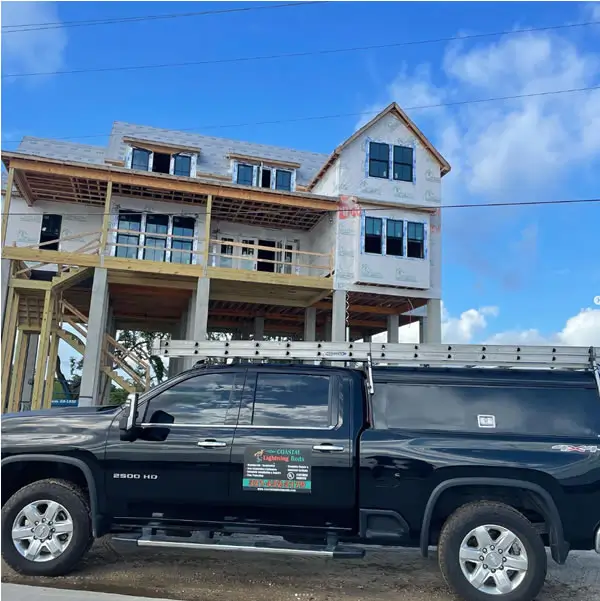Purpose: Lightning rods, also known as air terminals or lightning conductors, are designed to protect buildings and structures from lightning strikes by providing a preferred path for the electrical discharge to safely travel to the ground.
Benjamin Franklin’s Invention: Benjamin Franklin is credited with inventing the lightning rod in the 18th century. His experiments with electricity led him to develop the concept of a pointed metal rod to attract lightning and conduct it safely into the ground.
Design: Lightning rods are typically made of conductive materials such as copper or aluminum. They are installed at the highest points of buildings or structures to increase their effectiveness in attracting lightning strikes.
Principle of Operation: Lightning rods work on the principle of “point discharge.” The pointed tip of the rod creates a strong electric field that ionizes the surrounding air, making it easier for lightning to strike the rod and follow its conductive path to the ground.
Grounding System: Lightning rods are connected to a grounding system, which consists of conductive cables or rods buried in the ground. This system provides a low-resistance path for the lightning’s electrical current to dissipate harmlessly into the earth.
Effectiveness: While lightning rods cannot prevent lightning strikes, they significantly reduce the risk of damage to buildings and structures by safely channeling the electrical energy away from sensitive components.
Installation: Proper installation of lightning rods is essential for their effectiveness. They should be installed by trained professionals following recognized standards and guidelines to ensure they meet safety requirements and provide adequate protection.
Maintenance: Regular inspection and maintenance of lightning protection systems, including lightning rods, are necessary to ensure they remain in good working condition. Any damage or deterioration should be promptly addressed to maintain the system’s effectiveness.
Legal Requirements: In many regions, building codes or regulations require certain types of buildings, such as tall structures or those housing sensitive equipment, to have lightning protection systems installed. Compliance with these requirements helps ensure the safety of occupants and property.
Safety Precautions: While lightning rods are designed to protect buildings, it’s essential to follow safety precautions during thunderstorms. Avoid contact with lightning rods and other metal objects outdoors during storms, and seek shelter in a safe location away from windows and plumbing fixtures.




Florida based lightning protection company Coastal Lightning Rods offers design, installation, test and maintenance of lightning and surge protection and earthing systems. We ensure you that our installation of a lightning protection system on your property will be of the highest standard. We provide lightning protection services throughout the state of Florida, entire South East, Gulf Coast and Atlantic Coast. We also provide lightning protection in Alabama, South Carolina, Louisiana, Florida, Mississippi, Tennessee and beyond.

